Photo Credit: Conner Penfold| Giant Potential
The weekend started out with crummy news regarding a long time favorite here at There R Giants.

I’ll talk about this more when I reach Canario’s spot later in the series but for now, it’s a tough blow for a talented kid and we wish him the best in his recovery and rehab! But neither bad news nor dark of night keeps us from our appointed rankings, so on we travel…
This is the fifth in a series of posts rolling out There R Giants Top 50 prospects for 2021. To read the previous installments:
It’s Top 20 Week! Looking forward to bringing this one in for a landing and then kicking my feet up for the holidays. Breaking into the top 20 we have, in my estimation, left the FV 40 group behind. I have 45s and 50s on everybody from here out — which might be generous on my part but not homerishly so I don’t believe. Everyone in the Top 20 has a decent chance of playing some role on a big league club in their future — which means that everybody on this list should have some value to give the Giants be it trade, depth, or real production. Pretty exciting — there r literally giants here (we think)! This is also the most pitcher dominated decade in my rankings as we’re going to have a long run of pitching prospects today.
Just as a reminder, in this post I’ll be using the 20-80 scouting scale to refer to player’s Future Value (FV), utilizing the great work done by Kiley McDaniel and Eric Longenhagen at Fangraphs. I’ve also added risk factors and lowered FV expectations for players far away. Here’s a handy guide with familiar examples to keep a picture in your mind on what the FV grades mean:
80: Franchise Player, #1 starter (Mike Trout, Clayton Kershaw)
70: Perennial All Star, #2 starter (Nolan Arenado, Stephen Strasburg)
60: Occasional All-Star, #3 starter, Elite Reliever (Jose Abreu, Mariano Rivera)
55: First Div. Regular, #3/4 starter, Closer (Brandon Crawford, J. Samardzija, Z. Britton)
50: Average Regular, #4 Starter, Set Up RP (Cesar Hernandez, Tanner Roark, A. Ottovino)
45: 2nd Division Reg or Platoon player, #5 starter, low leverage reliever
40: MLB Bench Player/Reserve
35: Up and Down/Depth Player
30: Triple-A Player
20: Organizational player
#20. Gregory Santos, RHP
DOB: 8/28/99
2019 Highest Level: Low A
Potential 2021 Level: High A
Acquired: Trade, with Shaun Anderson in return for Eduardo Núñez (2017)
Future-Value Grade: 45 (Risk: Very High)
Santos was one of my most difficult placements and I moved him around a lot before settling here at the doorstep to the 20. From one perspective, I wasn’t sure exactly how far I was justified in separating him from Jose Marte — to whom he bears a lot of similarity — and Marte ended up a full ten-spot above here. Even now I’m thinking that I either have Marte way too low or Santos way too high. [Note to self: go back and edit Friday’s post and pretend you ranked Marte higher; no one will know].
Let’s back-pedal two years. Here’s a comment a scout sent my way following the 2018 season:
At that point Santos was a barely-turned 19-year-old wunderkind and many (myself included) argued that he was the system’s best pitching prospect. There was exceptional athleticism in the delivery. He had a fastball he cranked up to 98 and consistently sat around 94-96 with heavy downward action that picked up groundballs by the boatload. He could vary the shape and break of his sharp, biting slider, which registers a spin rate of 2650 rpm — not that far below Camilo Doval’s. There was even a “coming along” changeup. It was a drool-worthy package of goods.
The results weren’t quite there yet — an ERA of 4 and a half in Salem-Keizer and less missed bats than you’d prefer to see. But that didn’t matter so much — he was quite young for his league, and suffered a freak injury as well, when he was hit in the head by a line drive. He had plenty of time for his stuff to translate into results.
But as it tends to do, time has passed us by rather quickly. Next year Santos will turn 21 and we still have a lot of the same unanswered questions — plus a few new ones. He missed most of 2019 with two bouts of shoulder soreness. When he did pitch he didn’t miss bats at all despite the hellacious stuff. One perspective would be: the stuff is still in there and nothing too serious has happened medically so he should be fine. I lean that way, which is why he’s still in my top 20. But pitchers who aren’t on mounds have to be viewed cautiously. Those “reliever risk” questions certainly haven’t disappeared, and as a reliever, do I necessarily like his future more than Adon’s or Cyr’s who we passed up last week?
These two years (19-20) are important developmental years for kids, physically, and Santos is another big-framed kid for whom fitness and strength and conditioning are crucial. Stuff can back up and go forward again based on health and conditioning and many other biokinetic ingredients. At this point, with two lost seasons behind him, it’s hard to determine where he is in his physical or professional development. The promise of a special arm is still there, but we need to see it in action again and unfortunately Santos wasn’t a player we heard much about in Instrux (again, possibly to avoid other teams seeing him in front of the Rule 5 draft).
He’ll likely head to High A (where ever that is) to begin 2021 and Santos now has a growing list of To Dos: figure out why batters get such clean swings on his fastball, get more swings and misses, show the changeup has developed. And then all the pitcherly things as well: move pitches around the quadrants, improve sequencing, get the ball onto the edges of the zone more often and out of the Hit Me Zone. It’s a long list, but Santos is certainly the kind of pitcher who can move quickly as he starts checking off boxes. As noted, Santos is Rule 5 eligible though my guess is the Giants can risk floating him through without adding him to the 40 man this week.
#19. Nick Swiney, LHP
DOB: 2/12/99
2019 Highest Level: N/A
Potential 2021 Level: High A
Acquired: Draft, 2nd Rd (2020)
Future-Value Grade: 45 (Risk: Very High)
There’s no doubt that the Giants were high on Swiney who they signed for an overslot $1,197,000 deal as a 2nd round supplemental pick, thus making him the third Wolfpack member they acquired in the last year (along with trade acquisition Will Wilson and 1st round pick Patrick Bailey). Swiney was a selection that took real conviction, because much of his case rested on just four starts made this spring before COVID shut the NCAA season down.
Prior to his Junior year, Swiney had worked out of NC State’s bullpen for two years — running up huge strikeout totals but also throwing a troubling amount of balls outside the zone. But this year, the Wolfpack transitioned Swiney into their Friday night starter, and he blossomed in the new role. Swiney allowed just four runs total over the four starts (28 IP) and he took a quantum leap in his command, running up a dominant 42 to 6 strikeout to walk ratio. On the final day of February, he struck out 15 Purdue Boilermakers — the highest total by an NC State pitcher since White Sox 1st rounder Carlos Rodon in 2014. Those four starts convinced the Giants that Swiney could thrive in a starters’ role.
Despite the big strikeout numbers, Swiney doesn’t have a power arsenal. There’s a decent amount of Andrew Suarez about Swiney — which may be my way of throwing a sneaky Rohrschach Test at you. He’s dominated hitters with a solid three-pitch mix, the best part of which is his secondaries. His fastball tends to sit in the 89-92 range, as a starter. Behind it he mixes a hard breaking ball and a change which flashes plus. In Jim Callis’ review of the Giants’ system published last week, he rated both Swiney’s slider and change as the organization’s best.
Still, if the command improvements Swiney showed in his brief starts this spring hold up, there’s a high floor for a left-hander with two excellent secondary pitches and a fastball he can command. There may not be a super high ceiling there — but the value is pretty obvious. If the command backslides, however, there’s still a decent amount of reliever risk here. Even there Swiney could have real value as a middle inning reliever who can get both lefties and righties out — along the lines of Caleb Baragar’s role this summer.
There’s some effort in the delivery, and a noticeable head whack on the finish which keeps the command profile in the question mark category for me. I’d also love to see a touch more velocity out of him — that was the key to Baragar’s improvements and it’s probably been the limiting factor on Suarez’ career. But it’s likely you’re going to see him in some role in the major leagues down the line.
#18. Blake Rivera, RHP
DOB: 1/9/98
2019 Highest Level: Low A
Potential 2021 Level: High A
Acquired: Drafted, 4th Rd (2018)
Future-Value Grade: 45 (Risk: Very High)
While Santos was having trouble missing bats in 2019, his Greenjackets rotation-mate Blake Rivera showed no such difficulty. Though Rivera consistently fought command issues, his one-two punch of fastball and a killer curve simply overwhelmed poor Sally league hitters — and has a solid argument as the best two-pitch combo in the system.
Both of his primary pitches come with elite measurables. The fastball, which tends to sit 94-96 and reaches higher than that, delivered the third highest spin rate in minor league baseball in 2019 at 2600 rpm (the Giants were actually well represented on that list as we’ll see in a minute). That fastball generated plenty of swing and miss. Fangraphs noted that Rivera’s swinging strike percentage was actually a good deal higher than his 27% K rate. And when hitters weren’t flailing at it they were pounding it into the ground. If you remember my podcast with FaBIO designer Matt Collier, he was also extremely enthusiastic about Rivera’s future, especially highlighting Rivera’s elite ground ball and pull-side flyball avoidance (which is where home runs tend to erupt).
And all of that comes before you even get to Rivera’s finest pitch, a true hammer curve which ALSO comes with one of the minor league’s highest spin rates (2800 rpm — top 20 in 2019 MiLB). It’s truly just drop-dead gorgeous offering to see — hopefully one we’ll see Pitching Ninja feature some day. It’s a legitimate plus pitch.
Rivera’s always been assumed to be on a reliever track because of the command issues and the lack of a third pitch. But he has a starter’s frame and I wonder if the game is moving away from the notion of starter’s needing a changeup, or a third pitch at all. We’re seeing more success stories of two pitch starters (like Kevin Gausman, for instance) or guys like Dinelson Lamet who use two different fastball grips and a breaker. In Future Value, McDaniel and Longenhagen noted that analytics suggest that the ideal package is: 1) a straight pitch; 2) a pitch that breaks laterally; and 3) a pitch that breaks down. That package should enable a pitcher to deal with RH and LH hitters. With Rivera’s blow ‘em away fastball at the top of the zone and hard downward-breaking curve, perhaps all he needs to compliment the two is a cutter or two-seamer that runs to his glove side.
All of this, of course, assumes progress with his command which still has a long way to go. But the big kid from Alabama is high in that group of exciting arms that could move quickly this year and see time in AA if he can live in the strike zone more often.

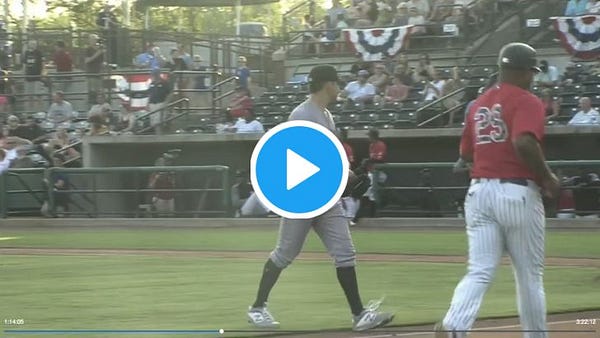
#17. Trevor McDonald, RHP
DOB: 2/26/01
2019 Highest Level: Rookie (Domestic)
Potential 2021 Level: Low A
Acquired: Drafted, 11th Rd (2019)
Future-Value Grade: 50 (Risk: Extreme)
Imagine Rog as a cartoon character — with a tiny angel on one shoulder and a tiny devil on the other. Though perhaps “angel” and “devil” aren’t the right terms — maybe it’s just tiny “Trevor McDonald Enthusiast” standing on one shoulder and “Level Headed Rationalist” on the other. Throughout this process, the TM Enthusiast kept singing sweetly in my ear: “Push him higher! Push him higher!” While LE Rationalist would gruffly grunt: “Dude, he’s got 4 innings in pro ball. Calm it down a little.” It was a rough battle up to the very end — believe me, this was not the highest I had young Trevor, but the enthusiast has to be leavened with some rationality to be believable, so here McDonald lands.
The danger with someone like McDonald — who’s been more talked about than seen over the last two years — is allowing the Dream Factory of one’s mind to produce visions unfettered by the cold counterpunch of reality. Most of what is known about the 19 year old still comes from his Mississippi High School days, where he gained renown among scouts when striking out highly regarded Jerron Early twice as part of a 12-K day near the end of his senior year. He had long been regarded as an interesting high school pitcher, but adding on 20 pounds of muscle in the summer after his junior year caused a jump in his fastball — up from the mid-to high 80s to more 92-93 with room to grow. His fast arm and feel for spin gave him the ingredients for developing into a starting pitcher with further maturation of body and skills.
The Giants popped the questionable sign with an 11th round pick (under current CBA rules if a team fails to sign a pick from the 11th round on it doesn’t cost them the pool allotment that goes with the pick as it does from 1-10 rounds). His signing bonus of $797,500 was tied for third highest of the Giants’ 2019 draft and stands as the highest bonus for an 11th round pick by any team over the last four years.
Precious little has been seen of him since, but what we have seen has continued to be intriguing. He pitched just 4 innings in his rookie complex debut, as the Giants wanted to ease him into pro ball — had they known what 2020 would bring perhaps they would have made a different choice. But in those 4 innings he was dominant, striking out 8 of the 16 batters he faced and getting ground balls from nearly everyone else. McDonald was another pitcher in the Giants’ system whom FaBIO really loved. According to Fangraphs’ data his fastball peaked at 96 in the AZL, sitting most of the time 90-94 with high riding action. While the spin rates weren’t terribly high (2200 FB; 2350 Curve) that’s not unusual for teenaged pitchers, still growing into greater strength. He showed enough promise with his feel for spinning a breaking ball to project the curve as an above average or potentially even plus pitch down the line. And crucially, his control has raised many red flags as of yet — which is why he gets the slight nod over Rivera despite less developed stuff.
As for development needs, the biggest one is just to get on a mound and start facing pro competition. The shape and bite of the breaking ball will need more consistency and, as of yet, he hasn’t shown even a nascent changeup or third pitch — one presumes that he’s been working on that over the last 15 months while remaining out of sight. He should be ready to head to Low A and start decking out those Dreams with some reality-based data. And then maybe next year at this time the TM Enthusiast angel will win out.
#16. Tristan Beck, RHP
DOB: 6/24/96
2019 Highest Level: High A
Potential 2021 Level: AA
Acquired: Trade, in return for Mark Melancon (2019)
Future-Value Grade: 45 (Risk: Medium)
Yeah, it’s a run on pitchers. All of these guys sort of bunch up together, because a lot of them come with similar mixes of strengths and flaws — reliever risk, command issues, no fully-developed third pitch. The pull of the Dark Si…uh I mean, Back-End starter …runs heavy through today’s list. I could CTL-C/CTL-V a lot of these write ups as a time saver.
That’s ok though. All good organizations have a whole bunch of guys who might put it together and be back-end guys, might fall short and carve themselves a role in the bullpen, might end up the 7th and 8th starters in AAA waiting for the IL stint that gives them another opportunity. Tristan Beck falls solidly within this range of possibilities.
Beck’s question marks have mostly resulted from wavering stuff dating to back to a stress-fracture in his back during his Sophomore year at Stanford. He missed all of that year and when he resurfaced in 2018 his stuff had backed up significantly. The version of Beck that the Braves mostly saw was a fastball in the 88-92 range, down from the 96-97 he’d shown as a college Freshman. And the curve often lacked finish and rolled over.
As it turned out, the Giants showed an exquisite sense of timing when they acquired Beck in the Mark Melancon deal, because after about 2.5 years of injury-altered performance, they suddenly found that they’d acquired a pitcher whose health was rounding back into form. And with it, his lost stuff was returning. Beck’s 2019 was a tale of two halves, with a remarkable turnaround occurring almost exactly at the fulcrum point of the trade. He gained greater fastball velocity through the second half, and by the time he appeared in the Arizona Fall League he was looking a lot like the guy who had starred as a Freshman at Stanford. The fastball was hopping and the snap was back on his signature 12-6 curve.

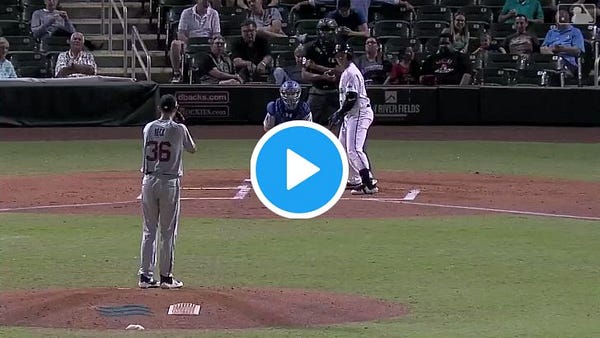
At the just-wrapped Instructional League, Giants’ twitter reported he was hitting 95 with his fastball (in short stints) and Farm Director Kyle Haines told the Chronicle’s Hank Schulman that Beck had “a really good camp” and could come quickly. Notably, he seemed to be busting out an impressive looking splitter or change at Instrux, which could be an important development for his arsenal. Beck should start 2021 in AA, and there’s a chance he could debut next season if continues to look this good. Don’t be surprised if he works his way into a spot start here or there by the end of 2021.

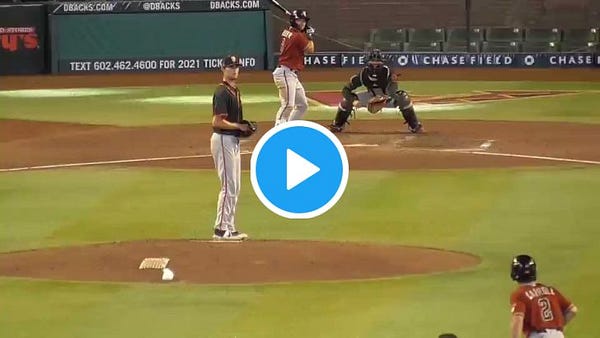
#15. Camilo Doval, RHP
DOB: 7/4/97
2019 Highest Level: High A
Potential 2021 Level: AAA
Acquired: International Free Agent (2015)
Future-Value Grade: 50 (Risk: Very High)
And now for something completely different: a RELIEF pitcher who has no starter pretensions. And yet here I am ranking him ABOVE other pitchers who only have reliever risk. What gives? Doval fits the 50 grade for me as a potential high leverage set-up reliever, and I could honestly knock him up to 55 if I had more faith in the command settling in. For me, he’s the best chance for a “closer of the future” in the system, with really only Blake Rivera challenges him on that score in my mind.
It’s probably not a big surprise that I tend to pair those two together. I mentioned above that Rivera had the third highest spin rate in the minor leagues in 2019 — the highest in the minors (2750 rpm) came from Doval. Only Trevor Bauer had a higher average fastball spin in MLB this year. And the pair is also head and shoulders above other Giants prospects in the spin of their breaking ball — with Doval’s 2700 rpm coming behind Rivera’s 2800 on the breaker.
Doval combines that crazy high spin rate with pure velocity — the fastball can come in anywhere from 93-99 and has been clocked at 100. He also adds deception to his delivery with a slingy cross-fire that thoroughly dominates right-handed hitters, who batted just .149 with 0 HRs against him in 2019.
His motion can also lead him to fall out of sync and lose complete command of the strike zone — he’s had games in each of the past two years where he simply could not throw a strike for extended periods. That might also explain the wide range of fastball velocity he sometimes shows. That has been a topic of some debate with scouts over the years — with some positing that he doesn’t have a consistent grip. Getting his deliveries more consistently in the upper register will be an important step for him. He also may need to find an additional weapon to use on lefties who do hit him significantly better than right-handers.
Doval was brought to the Alternate Site in 2020 as part of the Giants’ 60 Player Pool and his work there was impressive enough to join the major league Taxi Squad near the end of the year. Had the Giants made the playoffs he might have been in the conversation to join to the playoff roster. As is he’ll certainly come to spring training pitching for a job in the pen in 2021 and will very likely be making his major league debut (Dr. Andrews be willing) before the season is over.

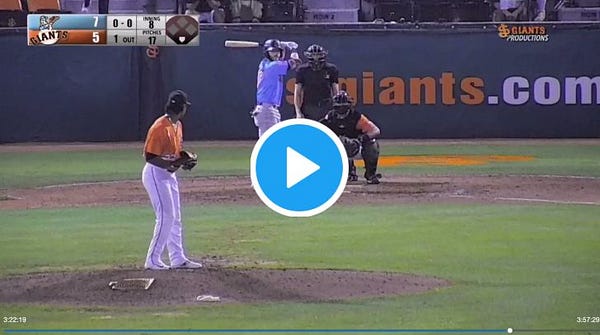
#14. Sean Hjelle, RHP
DOB: 5/7/97
2019 Highest Level: AA
Potential 2021 Level: AAA
Acquired: Drafted, 2nd Rd (2018)
Future-Value Grade: 45+ (Risk: Medium)
Hey, look! Another pitcher! And yup, I could go ahead and Copy/Paste in the back-end starter bit from the Beck opening paragraph, slap my hands together and call it a write-up! But let’s try just a little harder than that, shall we?
Hjelle’s calling card (besides the promise of being the tallest pitcher ever to make the majors) is a high certainty of value provided. The former SEC Pitcher of the Year came into pro ball with the classic High Floor/Low Ceiling projection. He throws lots of strikes, he commands a full variety of pitches. He’s known to be a fierce competitor on the bump. The limiting factor is the lack of an obvious Putaway Pitch in the arsenal. And if you don’t bring a Kill Pitch with you to a major league mound, the greatest hitters in the world will find ways to punish you for it. Classic Fourth or Fifth starter profile.
For his admirers, the thing that makes up for this weakness is the extremely unusual angle created by his 6’11” height. However, there’s some amount of mixed blessing to that angle. It’s unclear if he’s really a ground ball pitcher. In the Cal League he definitely was with 67% of his balls in play being put on the ground. However, after the move up to AA that dropped below 50% in his short time there. Meanwhile, the naturally long arm action that his height creates seems to give hitters a pretty good view of his pitches.
For me the biggest issue with Hjelle moving forward will be maintaining the quality of his stuff throughout his outings. The Hjelle who takes the mound with a fastball at 95-96 has, to my eyes, been a much more effective pitcher than the one who throws at 92-94. And the times I saw him last year he would pitch the opening innings at the former and move into the middle innings at the latter. The crispness of his secondaries tended to fall with the velocity of the fastball as well, creating his “second time through the order” issues at AA. I’m sure Matt Daniels is on top of the biokinetic chain details at play here — it’s quite possible this is a core strength issue which is a greater challenge for the über-tall pitcher in general. If the Giants can get Hjelle to the point where he’s ending his outings with something like the same the quality of stuff he begins them, then I think we’ll see that high floor that Hjelle’s admirers have always believed in. Maybe he’ll even break out of that “back-end” box and push his way to a #3 — which I define as “guys you can start in playoff game without a gulp and constant nervous glances at the bullpen.”
Now enjoy the way Hjelle’s head is cut off by the frame of this video when pitching (because he’s tall, you know!):
#13. Jairo Pomares, OF
DOB: 8/4/00
2019 Highest Level: A-
Potential 2021 Level: Low A
Acquired: International Free Agent (2018)
Future-Value Grade: 50 (Risk: Very High)
Unlike most everyone else in this group, I never waivered much on where I wanted to place Pomares. He feels like he clearly belongs right here, at the outer edge of the impact bats that make up most of the top of these rankings and before the thicket of pitchers we’ve just emerged from.
More than anybody above him, Pomares comes with just enough “tweener” profile concerns that he knocks back to the end of the top tier group. Though he was listed as CF upon signing as a 17-year-old Cuban refugee in 2018, there haven’t been many observers since who believed in his chances to stick there. With a below average speed and a below average arm, LF seems the most likely destination for him defensively.
His real calling card is a smooth swing from the left-hand side that projects as an above average hit tool. Pomares has solid bat speed, a short stroke, good balance through his swing, and shows a proclivity for getting the barrel to a wide variety of pitches in every quadrant. His pitch selection may have some work to do but he’s not a hacker and he makes good, hard contact. His average (90) and maximum (108) exit velocities in 2019 compared favorably with his contemporaries in the teenager/complex league set — even the most favorably regarded like Cleveland’s George Valera (91 avg, 107 max).
Whether that hit tool will come with the power you tend to like out of a LF is probably the biggest question with Pomares. There is some loft in his swing and a better understanding of what pitches he wants to attack — a little more selectivity — would likely produce the desired pop. Ultimately Pomares will go as far as the bat development takes him but a reserve bat or platoon player doesn’t seem terribly unlikely on the low end with the potential for average starter upside legitimately there. Pomares was the second highest signing in the Giants’ enormous 2018 J2 class ($975,000) and he’s done nothing so far to dampen the enthusiasm the Giants showed in giving him that bonus.
Pomares was not an invitee to the Giants’ fall Instructional camp and he’s probably the only hitter in the organization whose absence from Instrux didn’t cause me to lower him in the ranking (remember I dinged Sandro Fabian all the way out of the Top 50 — and I love Fabian). Though I didn’t let it impact my ranking of Pomares, I would dearly love to see an explanation for why he was among the missing.
#12. Logan Wyatt, 1b
DOB: 11/15/97
2019 Highest Level: Low A
Potential 2021 Level: High A
Acquired: Drafted, 2nd Rd (2019)
Future-Value Grade: 50 (Risk: High)
I made this point talking with Grant Brisbee on the podcast (not to mention in my Jimmy Glowenke profile), but Logan Wyatt gets boosted way up my rankings predominantly as an act of faith in The Process™. While Wyatt was definitely a split-camp selection as the Giants’ 2nd round pick in the 2019 draft, he embodies virtually everything the current Giants’ front office values. His batting eye was so highly regarded at University of Louisville that called third strikes against him were assumed be the result of “Umpire Error.” He led the nation in walks his Sophomore and Junior years, very nearly posting a .500 OBP as a Sophomore. Wyatt matches that with strong contact skills — he ended his college career with 135 BB to 91 Ks.
What Wyatt didn’t do in college was hit for much power — which is where the split camp came in. Skeptics don’t believe the swing is built for power and reimagining it to create loft would likely undermine the strengths he did have. Others see simple ways to increase power — improvements in the timing of the load, better utilization of the lower half, etc. And with extremely patient young hitters there’s always some need to nuance the line between patience and passivity. Turning discretion into controlled aggression takes time and learning.
But still, for me this is the absolute blueprint of a hitter the Giants should develop well. He brings an elite understanding of the strike zone and strong swing decisions. He covers the zone with good contact skills. He fits the suit! Now they need to help him understand how to attack for maximum damage when the swing light turns “Green.” Exactly what the major league coaching staff excelled at with players like Yaz and Dick and the UR-form of Wyatt, the ever-controversial Brandon Belt.
The Giants believe they can develop Wyatt into a major league 1b because he embodies their values. They should develop Wyatt into a major league 1b because their beliefs are well-founded on a bedrock of knowledge. We’ll know their beliefs are well-founded on a bedrock of knowledge when we see them accomplish with Wyatt what they believe they can. He’s a Human Tautology for this organization. His progression should be The Plans Made Manifest. And as he evolves from Giants’ prospect who evokes the least enthusiasm among the fanbase to “hey, this guy’s really good” we will know that The Process™ is working out just fine. Let the era of “The Wyatt Wars” commence.

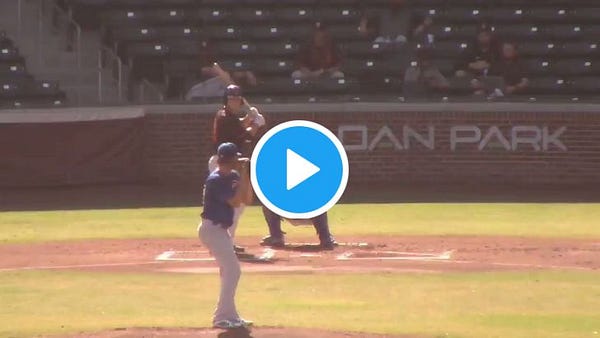
#11. Will Wilson, MIF
DOB: 7/21/98
2019 Highest Level: Rookie
Potential 2021 Level: High A
Acquired: Trade, with Zack Cozart for Garrett Williams (2019)
Future-Value Grade: 50 (Risk: High)
Will Wilson The Concept was an absolute triumph — a brilliant conjuring trick. “Madames and Monsieurs the box you see before you is completely empty! But a mere wave of my hand [carefully pre-stuffed with $13 million dollars] and Voila! where there was mere emptiness you now find an extra 1st round pick!”
[Thunderous Applause from the audience!]
Will Wilson The Player inspires, perhaps, a subtler form of appreciation I think. After completing the trade that brought Wilson to the Giants, the organization let it be known that Wilson had been strongly considered for the #10 pick in the 2019 draft that was used on Hunter Bishop. If so, the conversations in the War Room must have been fascinating, because it’s hard to imagine two more disparate choices. Bishop was all athleticism and promise, dogged by years of underperforming his tools.
Wilson, on the other hand, has long had a scouting card full of 40s and 50s on the tool grades. His below average foot speed and first step quickness have long made scouts skeptical of whether he can stick at shortstop. His arm is a tick short as well. But while the physical tools have never particularly stood out, the track record for hitting always has. The right-handed hitter finished his three years at NC State with a .315/.394/.584 line in over 800 PA. That statistical record included an excellent 11% walk record and terrific power for a middle infielder — he hit 15 HRs in both his Sophomore and Junior years. His track record with a wood bat is a little lighter, as he played little for Team USA prior to his Junior year and suffered through a difficult transition to pro ball after the draft (something he and Bishop do have in common).
Still the Giants have given every sign that they have full faith and confidence in Wilson’s abilities. He was one of the initial crop of prospects invited to Summer Camp and placed in the 60 Player Pool for hands on work through the summer at the Alternative Site. The Giants have worked Wilson at all three infield spots which could put him on a track for a utility role if the bat doesn’t develop fully, but long term he’s likely a bat-first 2b.
It’s too bad I already used my “poor man’s Wilmer Flores” line way back on Jimmy Glowenke. But if that poor man had a more affluent distant cousin, the cousin’s version of Flores would be Wilson. The bat is what you’re buying with Wilson and there should be enough of it to get him to the big leagues and hopefully carve out a role much like Wilmer has — by making a lot of hard contact, just enough power, working a steady amount of walks, and doing everything else well enough to make the entire package work. As the Giants have seen with the original version, you can get yourself solid value out of that mix.

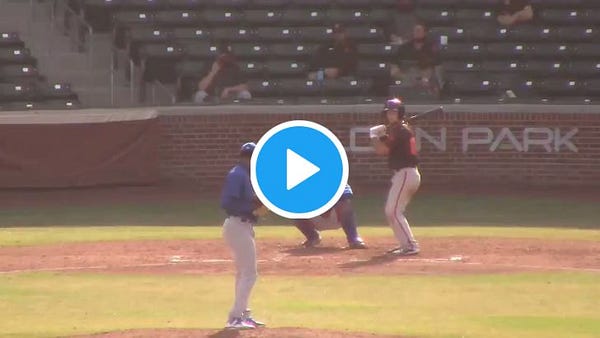
We’re on the home stretch! I’ll be back on Wednesday with the #6-10 prospects on my list. Will there be any surprises?
If you’re enjoying this There R Giants post, why not subscribe?





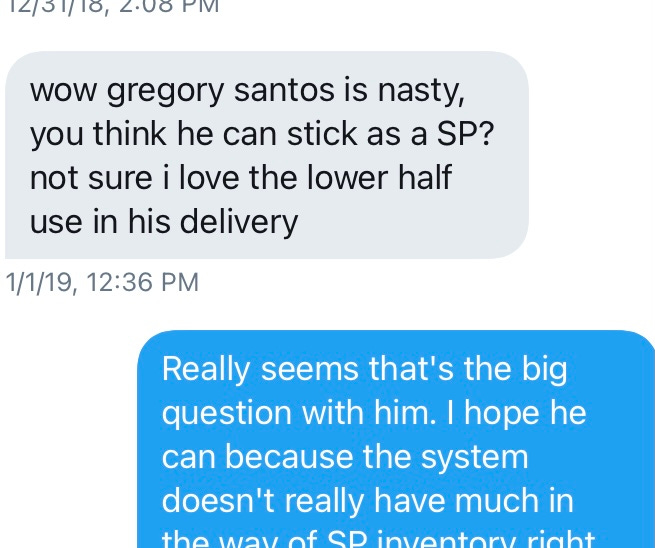

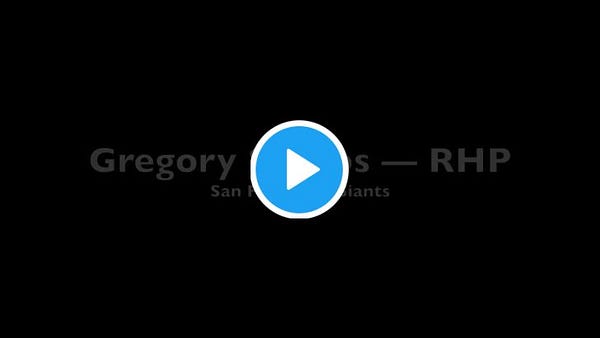
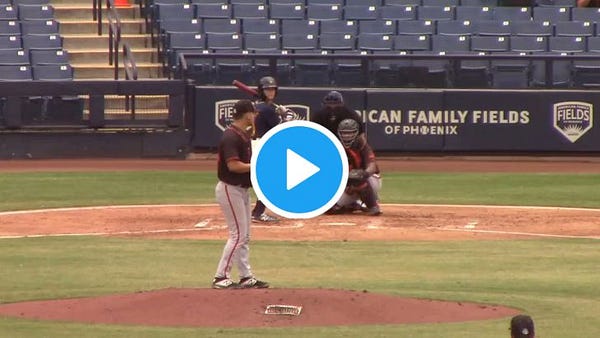
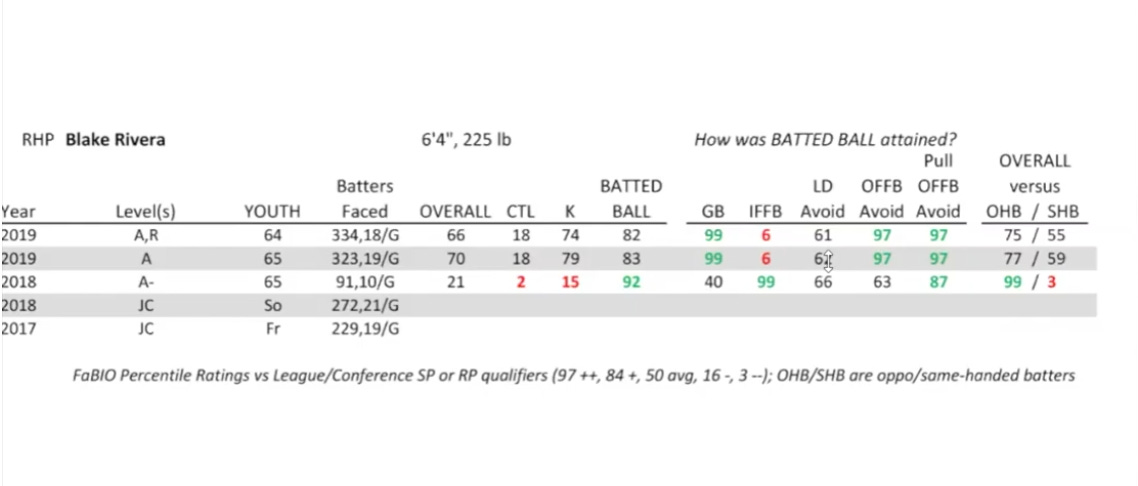
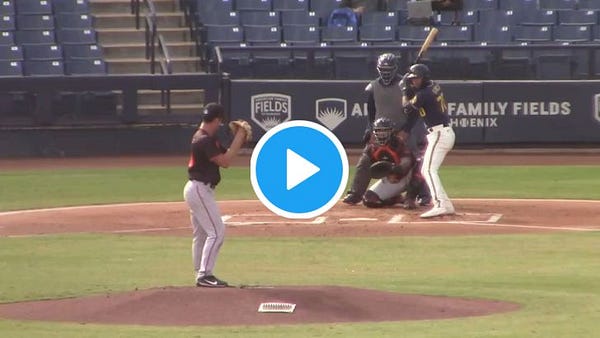
Logan Wyatt did not impress in those 98 plate appearances for the Florence Freedom in the Battle of the Bourbon League Trail a few months ago. Tyler Fitzgerald and Simon Whiteman were a little better though.
https://docs.google.com/spreadsheets/d/1jdTwYUbL5ShuAdArmmXh2G6cNp5Y164Ff521jjKqv60/edit#gid=973388404
Way late with this but do you not see Simon Whiteman getting more than a cup of coffee in the ML? I had hoped he might be rated 40's with his speed tool.